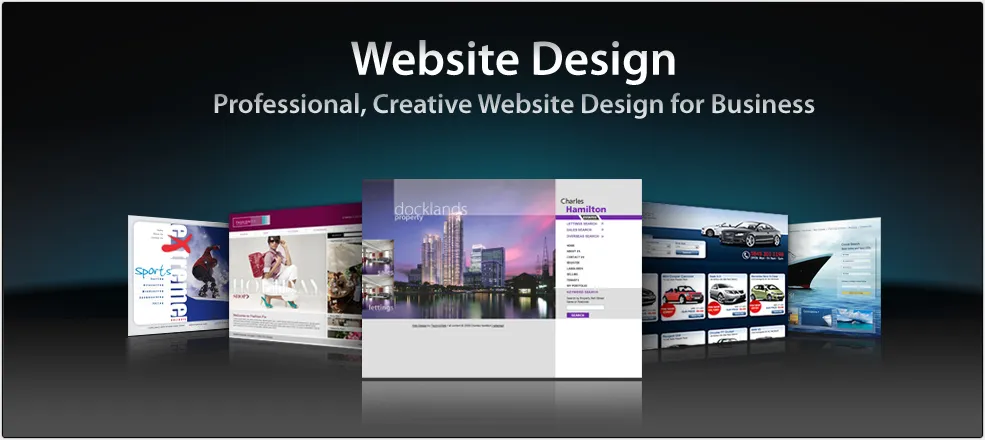In the constantly changing landscape of tech, web development and site design are regularly pushing boundaries, moving beyond mere aesthetics to embrace functionality that enhances user experience. As companies and creators work to meet the expectations of today's users, new trends are emerging that focus not only on aesthetic appeal but also on how effectively a website performs its intended tasks. This shift is driven by the increasing demand for smooth interactions, quicker loading times, and user access that ensures every user can interact with content.
Today’s web development landscape is characterized by cutting-edge practices that prioritize user-focused design. Developers and designers are now focusing on how features and elements can streamline navigation and improve accessibility, ensuring that visitors can easily get the information they need. As we explore these current trends, it becomes evident that functionality is taking center stage, and the future of web development and design is all about creating experiences that resonate with users on various levels.
User-Focused Approach
User-centric approach has emerged as a crucial movement in online design and web aesthetics, emphasizing the importance of customizing experiences to individual users' preferences. This approach goes beyond just creating attractive designs; it focuses on functionality and ease of use to ensure that users can browse and engage with web pages effortlessly. By analyzing the target audience, developers and designers can create personalized experiences that appeal with users, in the end leading to higher involvement and contentment.

The rise of user-oriented design is driven by a heightened awareness of different user demographics and expectations. With people browsing websites from different devices and environments, it is crucial to prioritize accessibility and ease of use. Modern site creation practices incorporate flexible layouts, ensuring that a site looks and functions properly on PCs, tablets, and mobile devices. By considering the user's environment and wants, designers can build layouts that adapt, offering seamless experiences across different platforms.
Integrating feedback and experience evaluation into the development cycle is also crucial. Developers and designers are employing tools and methodologies that allow for instant user feedback, enabling them to refine based on actual experiences. This collaborative approach not only enhances the design but also fosters a sense of participation among users, making them feel important in the design journey. Ultimately, user-focused approach leads to more effective, efficient, and pleasurable web experiences.
Site Enhancement
In past times, the importance of performance optimization in web development has surged to the top of design priorities. Sites today need to open rapidly and function smoothly across different devices and networks. As visitors become more frustrated with lagging pages, developers must implement strategies that enhance performance without compromising aesthetics. This entails optimizing images, utilizing optimized coding practices, and leveraging content distribution networks to minimize latency.
Another factor driving performance optimization is the emergence of progressive web apps. Such applications bridge the gap between web and mobile experiences, enabling users to reach web content offline and get push alerts. By AppWeb on instant loading times and smooth interactions, PWAs offer a more engaging interaction, resulting in increased user engagement and happiness. Developers are prioritizing the creation of PWAs as part of their performance plan, ensuring that web applications not only work well but also meet user expectations for immediacy.
Additionally, the integration of lazy-load techniques is transforming how developers approach content delivery. Lazy loading delays the loading of non-essential resources until they are required, significantly improving initial load speeds. This method is particularly valuable for image-heavy sites, as it guarantees that only content visible in the user's view loads first. By implementing lazy loading and other performance-centric strategies, web developers are also enhancing user experiences but also boosting their search engine ranking due to better site performance.
Accessibility Standards
A11y guidelines in website creation and interface design are becoming ever essential as the internet serves a wider audience. These standards ensure that web platforms are usable by people with various disabilities, including visual, hearing-related, and motor impairments. Implementing A11y tools not only enhances user experience for those with disabilities but also complies with legal requirements in many regions. Making content accessible involves using proper semantic HTML, providing text alternatives for visual elements, and ensuring that all interactive elements are accessible via keyboards.
Moreover, accessibility goes beyond compliance; it shows a commitment to inclusivity. Designers are now incorporating features like adjustable text sizes, high-contrast color schemes, and screen reader support into their work. This development in website design helps create an environment where everyone can access information and services fairly. Emphasizing A11y fosters a sense of community and expands the user base, leading to potential growth in traffic and engagement for companies.
In conclusion, as technology continues to evolve, it is important for web developers to stay informed about the latest guidelines, such as those laid out by the Web Content Accessibility Guidelines. Continuous education and adaptation to emerging tools and technologies are necessary for meeting these standards. By prioritizing A11y in web development and design, creators can build more functional and inclusive websites that cater to the diverse needs of everyone, thereby ensuring that the online experience is enriching and fair.
